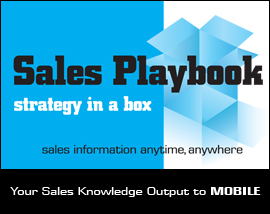Refuse to Lose: Networking Affiliate Spotlight
Growth Strategy Dynamics offers consulting on a variety of business-related topics – communications & public relations included!
The following is a write-up from one of our networking affiliates, Jordan Wilman. We worked closely with Jordan to develop a business success plan through a range of our strategies.

read moreMy name is Jordan Wilman, and I work in the communications and public relations field, specializing in communications, public relations, branding, social media, and identity building consulting. By reaching out and working with GROWTH Strategy Dynamics, you will be able to get connected with one of the best individuals & professional in this field.
I love helping, educating, and building strategies for individuals, businesses, and event teams on how they can grow their brand, increase their growth, and help maximize the tools they have available at their fingertips (such as social media). I love working with individuals and business from all walks of life, and I really enjoy helping my clients find success in the work I do for them.
I love taking on new opportunities, since you never know what you can learn from them, and they can ultimately make you grow stronger as a person. I’m a big believer in life; if you think you can, you can. Making sure each of my clients is happy with my service is something I strive at getting better at each and every day. All of my clients have their own individual and interpersonal consulting experience, which allows them to get the most out of their sessions.
My motto is: “Refuse To Lose”, and I love sharing this attitude with my clients. I want my clients to always feeling that they are adding value when working with me – short and long term. I love seeing people do well in their life, and it’s a pleasure for me to be a part of their success. If need help in this area, make sure you reach out to GROWTH Strategy Dynamics, so they can help make your business success a reality.
Why Sales Training is Vital to Performance Improvement

Sales training can be one of the biggest drivers to improve performance within an organization. And though there are many ways to improve performance, sales training gets to the heart of what sales performance is all about – that moment between the salesperson & the customer. No matter what a company “does,” it’s about getting salespeople in front of the right customer, at the right time, with the right tools. If the sales person doesn’t have the skills to create a great interaction then there is going to be a struggle and you won’t be able to execute. Execution as a skill, or being “the master of the moment,” is one of the most difficult things to teach a salesperson. Combine this with the ever-changing landscape of sales in today’s environment and you got yourself a real challenge to overcome!
Sales professionals have to know their industry, their customers, their products/services, as well as the applications of them. To be successful they need to provide value, more so than just what their product does. Clients are looking for insights, ideas, and looking for you to help them make a better decision or get them to where they want to be. Salespeople have to work on translating information into value, then improving their client’s ROI.
When we look at implementing sales training across an organization we need to look at it strategically. Most people only look in one particular area, when in reality there a few you should look at when doing sales training implementation. Break it down to three segments: what happens before, during & after the training. Most people only focus on the during (the manner in which you deliver the training), what we find more important is to have the before & after in order.
Before: is the organization you’re targeting ready for this change? What are their perceptions around selling? These perceptions drive the messaging around the sales training. The idea is to prepare the mindset then conduct the training.
After: this is where the real work begins – taking knowledge and turning it into behaviours. There is a transition here and we cannot have unrealistic expectations for new trainees, but it is important to keep the end-goal in mind.
read moreWhy Business Acumen Matters for Sales Teams

Business acumen is the formal term for “business savvy” or “business sense.” It is the keenness & quickness in understanding and dealing with a business situation (risks & opportunities) in a manner that is likely to lead to a good outcome.
How does business acumen translate into greater access to decision makers? The reality is, business executives want to talk to other “business savvy” people. The following are some insights on how to sell to business executives:
- The reality is, the language of business is accounting & finance – it’s a numbers game. You have to be able to talk about & understand the language of business. You need to know and understand enough to converse in intelligent, credible conversations with the business executives that you meet with.
- Competing on value is one of the keys to this is – being able to position and understand the impact of what you sell on the business you’re selling to. Value is always going to directly relate to the business objectives and issues facing the organizations you’re selling to. If you can’t have a business conversation, you will struggle in creating & understanding the value and justifying the solutions you sell.
- It’s important to remember that business conversations are different than regular conversations. Think of what salespeople typically get trained on – the industry, the products, the services, potentially the competition. These salespeople are going into situations where they’re talking about what they know. Let’s say you’re selling software, you’re going to be very comfortable talking about it (what it does, its benefits, its features) – this is not a business conversation. The business conversation would be about why that software should be considered by the company that you’re talking to. It’s about the why (what’s going on in the business) and how you can connect your technical solutions to their problems.
Tips to Prepare for the Future of Selling

There’s no doubt the sales landscaping is changing, and with change sales people must adapt accordingly.
The number of salespeople is going to go down dramatically in the near future. The reason for this is because the sales profession has had to change, not in a dramatic fashion but in a professional fashion – sales people are going to have to become more “business people.” At one point we thought of sales people as social, relationship builders. This is still going to be important but they’re also going to have to have a great amount of business knowledge to bring to their customer in a way that can solve problems. They’ll have to re-think their approach, and maintain a “uncover, understand & solve” perspective; the social aspects are still important, but it’s this piece that is really becoming critical. They need to be a resource to their customers by uncovering their problems, their marketplace competitors, and the areas where they are at threat through strategic diagnostic questions and research.
The understanding component is the idea of helping your client and their organization understand how they can resolve the problems you have uncovered. How can you influence your client’s customers in a way that’s going to drive business back to your client? The hard part of this is communicating the understanding, as sometimes (a lot of times) clients don’t know what their issues are. They may know they have issues but they usually don’t know what they are or how to resolve them.
Solve is how you actually work to resolve the issues (i.e. what you implement). The hard part becomes doing it in a way where there is collaboration to create a solution that’s going to give a competitive marketplace advantage. This co-creational process is all about converting your insight into action for their organization. Ideally, you will apply your insight to your customer’s problems and offer choices, showing them the consequences of each clearly.
The sales world is moving away from the tactic of presenting a solution to potential customers and seeing if it fits into their needs, and towards a more fluid, co-creation of alternative solutions that create competitive differences!
read morePro Tip: Multi-Threaded Engagements for Prospecting

Some may call it integrated marketing, others multi-thread, but whatever you call it the theme remains: do no rely on any one approach. This is key when you’re trying to get in the door with larger accounts/clients, and other situations where you cannot just cold call by phone or drop by with info. Most large organizations have great gate-keeping, so getting creative on how you approach them is key – you have to find the way in & give them a reason to let you stay.
Mixing up your approaches, or applying a variety simultaneously, is a great tactic and essentially what “multi-threaded engagement” is all about.
Here’s a list of different forms of engagement, all relative & valuable depending on the situation and organization you’re trying to infiltrate:
- Telephone
- Cold drop-by
- LinkedIn InMails
- Social selling on LinkedIn
- Handwritten letter
- Postcards
- Or if you’re feeling super creative, send them some sort of impact mail (send the prospect an object that relates the message, i.e. a golf ball and then ask if they “want to drive more sales.”)
Use these approaches in tandem to build valuable relationships with prospects and truly showcase your personality & drive by approaching prospects with multi-thread engagement!
Need some guidance? Contact us today!
read more

